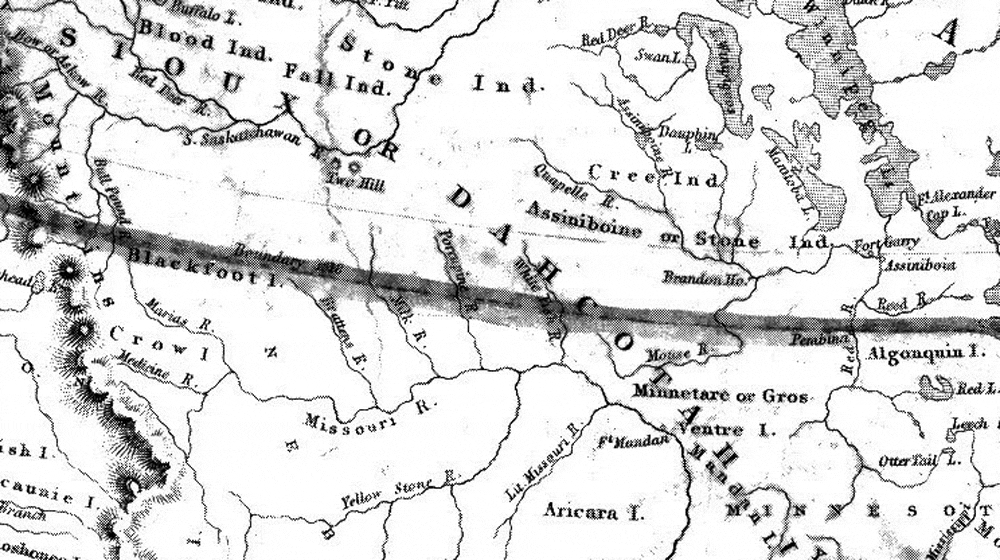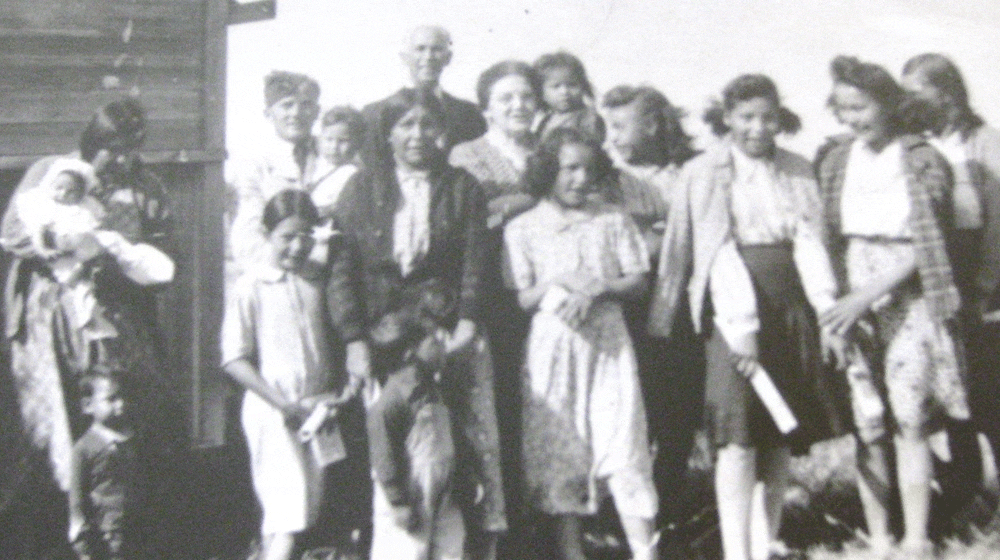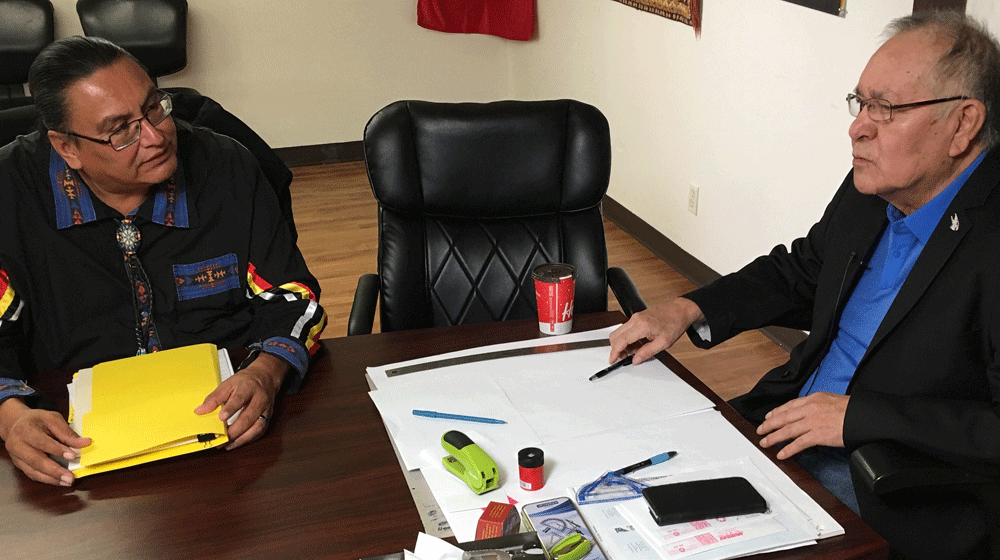It’s a tale of the federal government’s dealings with an Indigenous community that goes differently than you might expect.
Refugees or Righteous is investigative reporter Christopher Read’s latest documentary for APTN Investigates. It chronicles the uncommon story of a particular group of Dakota people who did things their own way and were a successful, self-sufficient community before being relocated by the federal government.
Long story short, instead of being allocated lands by the Crown and signing a treaty like most Indigenous groups, a group of Dakota people [in the late 1800s, in present-day Manitoba] didn’t sign a treaty, bought their own land and thrived – until government interference effectively ended their way of life.
These people who made their home near Portage la Prairie, 85 km due west of current day Winnipeg, have in the past been considered refugees from the United States by the Canadian government.
Their leaders are now hoping to negotiate compensation.
A plan to begin “Recognition of Indigenous Rights and Self Determination Discussions” was signed by Dakota Plains Wahpeton Nation Chief Orville Smoke and a federal negotiator in September of 2018 – but Dakota Plains representatives say federal officials went silent after that and planned meetings didn’t happen.
Chief Orville Smoke says he is eager to negotiate with the government, and from his perspective, the notion that he is not Indigenous to the place we now call Canada is ridiculous.
“We’ve always recognized the fact that we were here at time immemorial,” said Smoke. “We extensively researched and then we found out that there was actual documentation putting us here pre-Manitoba.”
Historical maps as well as archaeological evidence do indicate a Dakota presence north of the 49th parallel in western Canada.

(Detail of an 1857 Hudson’s Bay Company Map showing Dakota Territory extending across the 49th parallel into present-day Canada.)
But correspondence from the federal government as recently as 1996, makes the claim that “the Dakota Sioux were not Indigenous to Canada” – and that they were, instead, a nomadic people based south of the 49th parallel who occasionally ventured into present-day Canada to hunt bison.
More recently however, the federal government amended its position on the Dakota people in a 2009 letter to then chief Donna Elk of Sioux Valley Dakota Nation when an Indian Affairs official pointed out that, “Canada does not continue the historical practice of referring to the Dakota people as refugees.”
The notion that Dakota people might be something other than Indigenous to Canada came from history books where a lot of emphasis was placed on their exodus from Minnesota after the so-called Dakota War of 1862.
The U.S. Army famously hanged 38 Dakota men in the aftermath of the war, and later there were efforts to expel all remaining Dakota people from Minnesota via a $25 per scalp bounty, and by the confiscation of reservation lands.
Dakota people fled Minnesota, some coming north of the 49th parallel into British territory.
As the story goes, the Dakota people brought with them medals from the British, and proudly emphasized their earlier alliances with the Crown in the war of 1812.
But, archaeological evidence indicates that the Dakota people were not newcomers.
Kevin Brownlee, curator of archaeology at the Manitoba Museum and a member of Norway House Cree Nation, said that the Dakota people were known to make a kind of pottery known as “sandy lake” ceramics.
“The idea that Dakota peoples were making this pottery has become fairly well accepted within the archaeological discipline,” said Brownlee.
Brownlee said the locations where sandy lake ceramics are found indicate that Dakota people have lived in areas of present-day Minnesota, North Dakota, north-western Ontario, Manitoba and Saskatchewan.
And the idea that Dakota people were in the area around Portage la Prairie previous to the exodus from Minnesota in the aftermath of the Dakota War has been long embraced by members of that community.
Geneva Smoke is grand daughter of Chief Orville Smoke of Dakota Plains First Nation – but she lives in the nearby community of Dakota Tipi First Nation.

(Dakota people in the Sioux Village, also known as Lot 99, a piece of land near Portage La Prairie, Manitoba. Photo taken in 1949. Provided by Geneva Smoke.)
Archival research is an interest she inherited from her mother, and Smoke does a Facebook blog about the story of Sioux Village – the name sometimes used for the piece of land her Dakota ancestors purchased and lived on in the Portage la Prairie area.
“We’ve always been here,” said Smoke, “We didn’t just come up here when the Americans came.”
The purchase of the Sioux Village in 1893 – also known as Lot 99 – was done through trustees because Aboriginal people could not legally purchase land at the time.
And Chief Smoke says it was a time when things were going very well for the community.
“They pooled their money, put their wages together and bought a piece of land now known as lot 99,” said Smoke.
“And they lived on it and they built houses. They made streets and grew gardens and they were employed. We had an accounting for everybody. There was no homeless. There was no child abuse. There was no missing women.”
But then came government interference.
“For some strange reason in 1911, the city of Portage la Prairie made a motion to rid the Dakota in the area of their property,” said Smoke. “They made a motion and sent it to the Department of Indian Affairs and Indian Affairs responded very quickly and thus we ended up here in a semi remote area.”
In 1911, the city of Portage la Prairie wrote to an Indian Agent to complain of “immorality and drunkenness in the Indian Village.”
What followed was a more than 60-year series of events which deeply affected the community of Dakota people who lived around Portage la Prairie.
In the ensuing years, the federal government wrestled not just Lot 99 from them, but also a piece of land known as Lot 14 which the area Dakotas had also acquired
Over this time period, the community split – with some families moving onto lands surrendered by the Long Plain Ojibwa Reserve, and others moving to a piece of land called Lot 25.
Lot 25 later became Dakota Tipi First Nation and the land acquired from Long Plain became Dakota Plains First Nation.
Chief Smoke of Dakota Plains wants the federal government to compensate the band for the loss of use of Lot 99 where the community once thrived.
“What I would like to do is to have them recognize what they’ve done to us – criminally,” said Smoke. “And, we’re inside another treaty reserve.
“I’m not saying there’s anything wrong with that but the traffic stops at the bigger reserve. We tried everything to make ends meet. We had a store, we had a gas bar, we had VLTs – all of it. We just couldn’t get the population to support it.”
Smoke and band CEO Craig Blacksmith say that under the current funding model, Dakota Plains is finding it very difficult to make ends meet.
“The budget that we get today has to be increased to a level where it’s a third more than what we are which comes out to $1-million to $1.5-million a year going retroactively to 1911,” said Smoke.
“That’s what we were done out of. And when we negotiate. That’s what we’re asking. Give us that money back so we can carry on.”

(CEO Craig Blacksmith, and Chief Orville Smoke. Photo: Christopher Read/APTN)
Blacksmith also argues that given they never signed a treaty or surrendered any of their Aboriginal title, they could be allocated a settlement based in part on the protocols of the old Dominion Lands Act.
“If you were the head of the household you were entitled to 160 acres,” said Blacksmith.
Blacksmith pointed out that though the present-day band list of Dakota Plains has 260 people on it, it would, he believes be closer to 400 if the band had been allowed to thrive and grow on Lot 99.
Blacksmith’s calculation goes like this: 400 divided by a family size of five people gets you 80 families.
Follow Blacksmith’s math and you end up with compensation for Dakota Plains First Nation equivalent to about 32 square kilometres of good land – and Blacksmith translates that to an amount close to $60 million.
Chief Smoke is hopeful that sooner or later the federal government will come to the table and play fair ball.
“I think eventually we’ll get something,” said Smoke. “No matter what, somebody somewhere is going to realize that the Dakota were treated unfairly and that we do need to compensate them rather than to making contribution dollars.”











